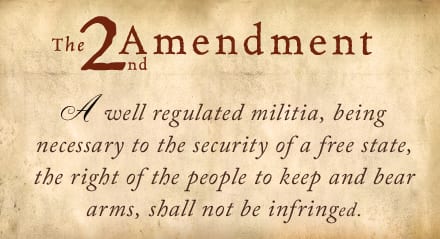Visitors looking for facts about Second Amendment history and intent can read the results of my research online in several articles and posts, which are described and linked below. The facts of American history can end the never-ending dispute over Second Amendment intent, but only if they are understood and deployed to undermine the error based belief system of gun control supporters.
First, the shortest and most detailed account of Second Amendment history and intent is found in my article, The American Revolutionary Era Origin of the Second Amendment’s Clauses. As noted in the prior post, this was printed in The Journal on Firearms & Public Policy’s 2011 issue. It traces the well regulated militia and right of the people to keep and bear arms language of the Second Amendment back in history to their earliest American bill of rights usage and authors. Then in goes back earlier in American history to the actual events from which such usage developed. The article amounts to an online crash course in Second Amendment history and intent.
Other online articles include four analyzing briefs supporting Washington DC in the Heller case for extensive historical errors. These demonstrate that those supporting gun control are entirely off base in understanding American history and rights. Such historical arguments were presented in briefs of fifteen professional historians (written by Stanford’s Jack Rakove), the city of Chicago, a large group of civic organizations, and three professional linguists. The first analysis, of the historians’ errors, Why DC’s Gun Law is Unconstitutional, was published by History News Network on February 17, 2008.
Three other articles were published at the secondamendmentinfo.com website. The Windy City’s Heller brief attempted to sway the Supreme Court by repeated use of the term “federalism”. My article, Chicago Re-Writes U.S. Bill of Rights History, examines and documents historical errors in Chicago’s brief.
An extensive founding era document section was presented as an appendix in the Heller brief filed by numerous civic organizations. The Second Amendment as Militia Law, or, Bill of Rights? What Bill of Rights?, is the article examining the off-track historical interpretation presented within it.
Historically oriented analysis of the linguists’ Heller brief is found in Professional Linguists Provide Half a Loaf with No Bill of Rights Ingredients.
A common theme runs through the historical Heller briefs of gun control supporters – lack of American Bill of Rights history, context, and intent. What this means in general terms is that they are all wrong, a fact documented at this blog in extensive analyses of the Heller professional historian amici entitled, Root Causes of Never-Ending Second Amendment Dispute, which consists of 24 parts. The gun control advocate view of the Second Amendment is a house of cards – nay, a rather extensive castle of cards. Removing the foundation, which consists of factual errors, causes the whole to crumble. I strongly recommend those wanting to fully grasp the historical import of these posts read them in order starting from part 1 (linked above), because the errors of fact build upon each other. The posts are documented and very detailed (read boring), but the payoff in essential historical knowledge is priceless.
The same suggestion is offered for two other series of six blog posts, each dealing with professional historians’ mistakes about the Second Amendment intent. In the Supreme Court’s McDonald case, which dealt with the Fourteenth Amendment issue of whether the Second Amendment was intended to apply to state and local governments, some of the same professional historians returned to re-argue Heller related historical issues. This was probably an attempt to get one justice to change a vote. Once again, there were significant historical errors and attempts to divert away from American Bill of Rights history in the two briefs analyzed. The first series,Historians Try to Sell London Bridge to U.S. Supreme Court, attempts to divert to English history for understanding an American Bill of Rights provision. The second series, Historians Try to Sell Benjamin Franklin Bridge to the U.S. Supreme Court, deals with Pennsylvania history. It was in Pennsylvania that “the people have a right to bear arms” language originated in American bills of rights.
This article was originally posted by David E. Young, to view the original article CLICK HERE



